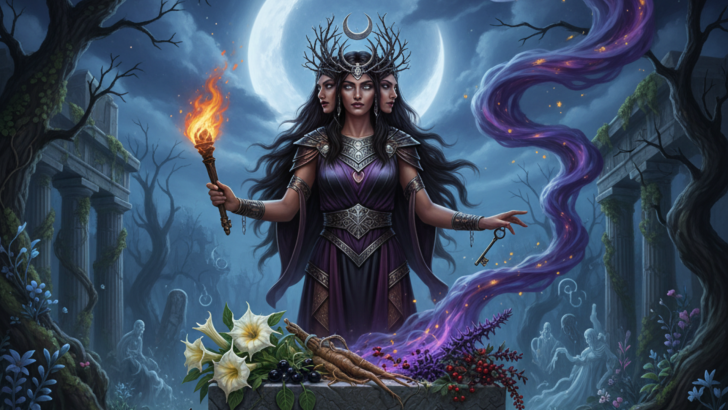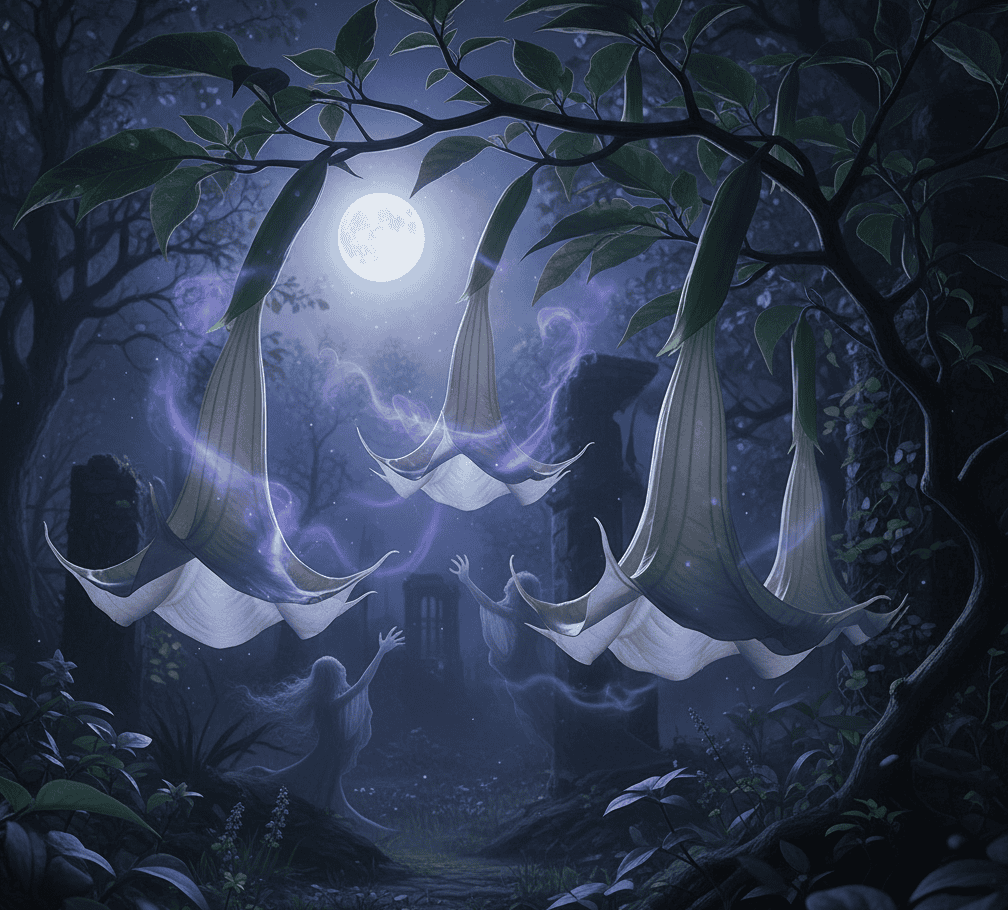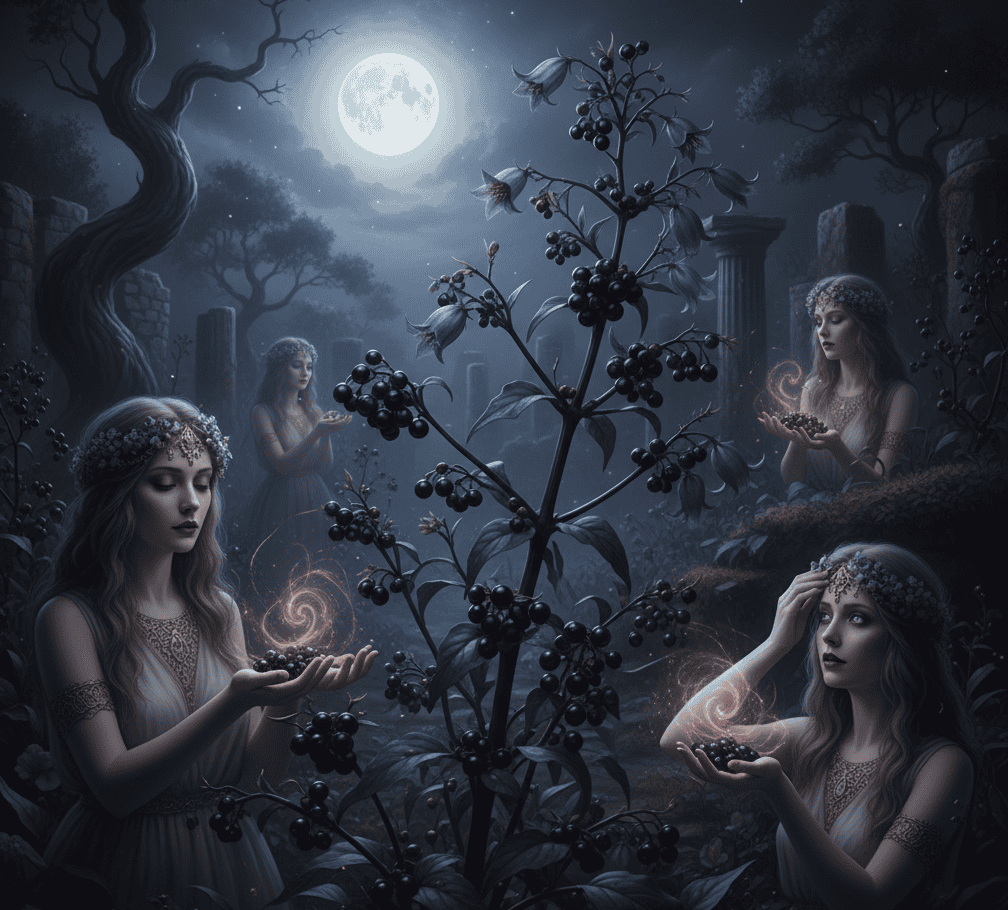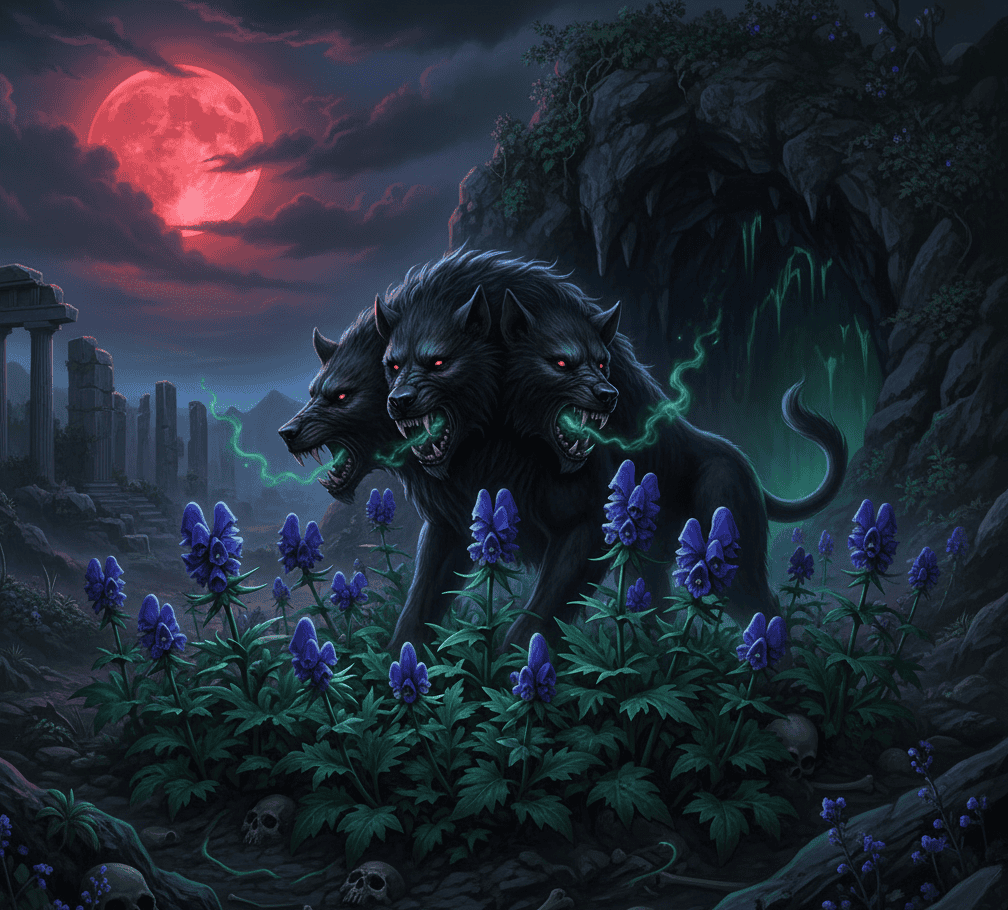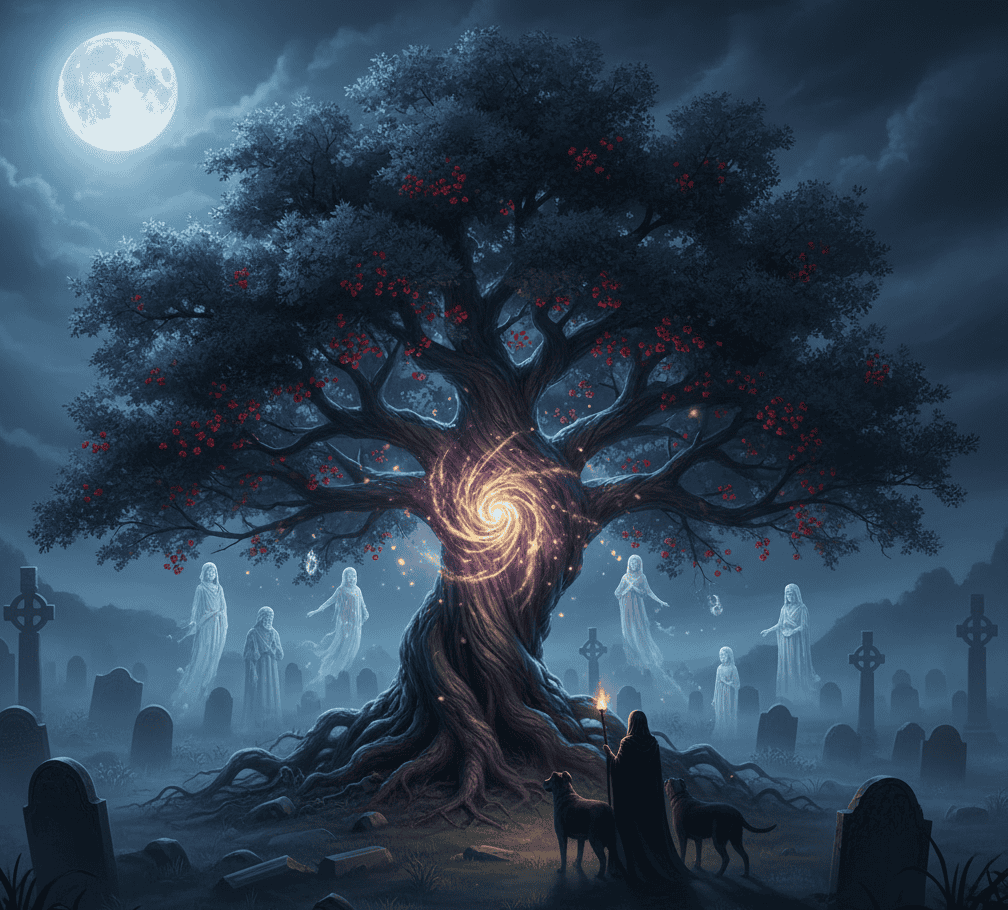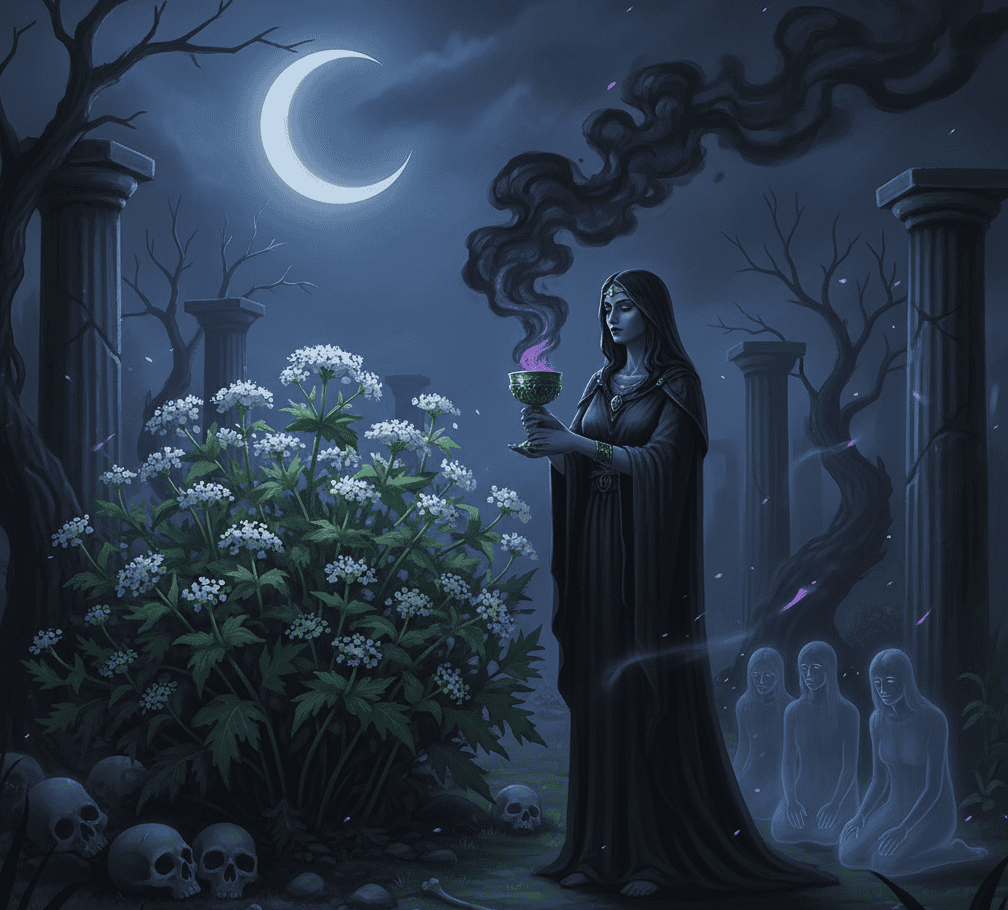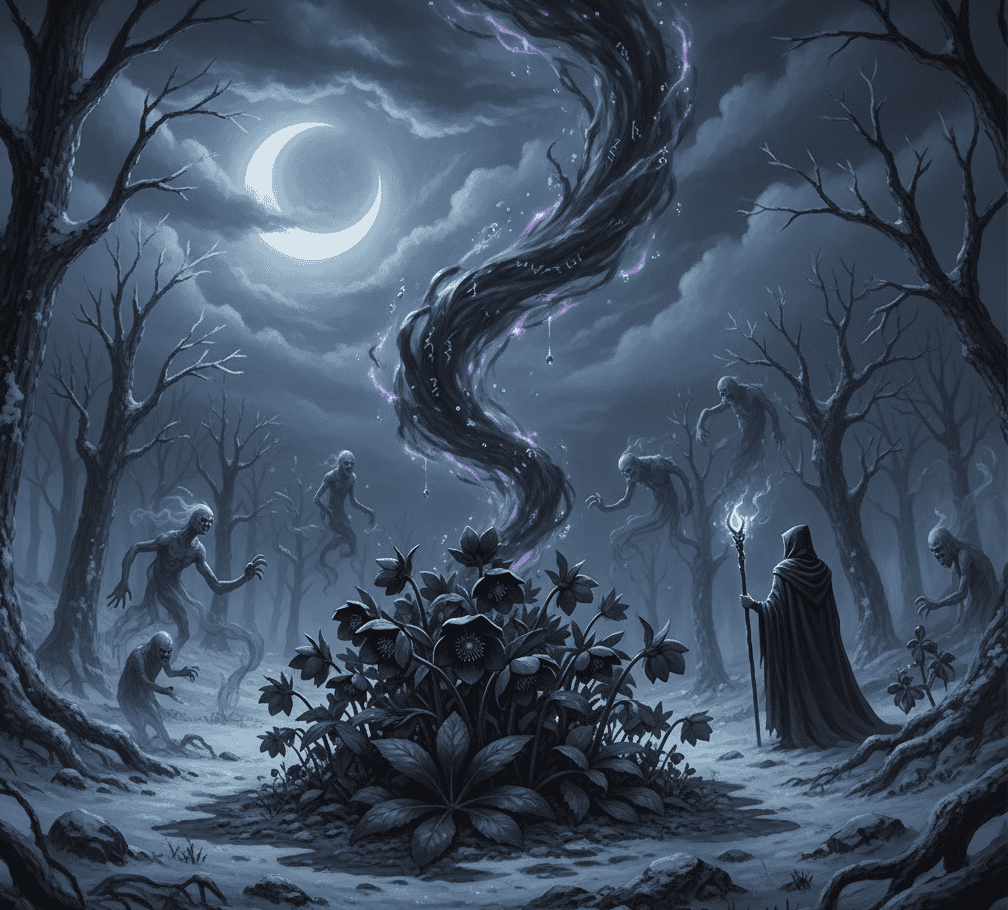Hecate, the mysterious goddess of magic, crossroads, and the night, has always been surrounded by an aura of enchantment.
She was often linked to the unseen world, where spirits, shadows, and strange powers lingered.
It makes sense then that plants and herbs associated with her were never just ordinary greenery.
These herbs carried stories, superstitions, and even dangerous reputations.
Some were burned in rituals, others brewed in potions, and many were gathered at night under the moonlight in her honor.
Let’s take a journey into the underworld garden and explore seven herbs that carried Hecate’s mark.
1. Mandrake
The mandrake is probably the most legendary of all the herbs tied to Hecate. Its roots often grow in a forked shape that looks eerily like a tiny human figure.
Ancient people believed the plant screamed when pulled from the ground, and that scream could kill anyone who heard it.
Because of this terrifying myth, harvesters used dogs to pull mandrake roots while they covered their own ears.
To Hecate, mandrake symbolized a bridge between life and death. It was used in love potions, sleep draughts, and healing charms, but also in dark curses.
Its powerful hallucinogenic properties gave it an almost magical quality, making it a true herb of both danger and fascination.
In ancient Greece, people thought the root held a soul of its own, and that spirit was said to be connected to the underworld where Hecate reigned.
2. Datura
Datura, sometimes called the “witches’ trumpet,” was another herb linked to Hecate’s mystical domain.
Its large, night-blooming flowers open under moonlight, a detail that would have felt perfect for a goddess who ruled the night.
This plant was highly poisonous, but in tiny doses it could produce vivid dreams, visions, and sensations of leaving the body.
Ancient sorceresses were believed to use datura to communicate with spirits or even travel spiritually to the underworld.
Because it could blur the line between reality and illusion, it became a natural companion to Hecate’s role as a goddess of shadowy crossroads.
Datura was never seen as just a flower—it was a key to other worlds, though one that could just as easily lock you out forever.
3. Belladonna
Belladonna, or “deadly nightshade,” was one of the most infamous herbs in ancient magical practice.
The name alone—meaning “beautiful woman”—shows how it straddled the line between allure and destruction.
Its berries looked tempting but were highly toxic, and its leaves contained alkaloids that could affect the nervous system.
Priestesses of Hecate were said to use belladonna in ointments and charms, sometimes rubbing mixtures on their skin to induce visions.
The plant’s association with darkness, mystery, and transformation fits perfectly with Hecate’s underworld image.
Belladonna symbolized hidden beauty with deadly potential, much like the goddess herself, who could bless or curse depending on her mood.
4. Wolfsbane
Wolfsbane, also known as aconite, carried an especially sinister reputation that scared many people.
Legend says it sprang from the saliva of Cerberus, the three-headed hound of the underworld, when Hercules dragged him to the surface as part of his labors.
If that isn’t a direct link to Hecate’s world, nothing is. This herb was both feared and revered.
It was lethally poisonous, yet in tiny amounts it was sometimes used in medicine. In folklore, wolfsbane was believed to ward off werewolves and evil spirits, making it a common ingredient in protective charms.
Its connection to Cerberus also tied it symbolically to Hecate, who was often pictured with dogs at her side.
Just as she guarded the crossroads, wolfsbane guarded the boundaries between worlds.
5. Yew
The yew tree has long been considered sacred and ominous. Its dark evergreen needles and blood-red berries made it a symbol of death and rebirth.
Yew trees were often planted in graveyards, where they represented eternal life, but they were also feared for their poisonous parts.
In Hecate’s underworld garden, the yew was a tree of mystery and shadow. Ancient people believed it connected the living to the spirits of the dead, acting as a kind of natural doorway.
Because of its long lifespan, the yew became a symbol of immortality, which made it a powerful part of funerary rituals and underworld lore.
For those who invoked Hecate, the yew tree represented her role as a guide between endings and beginnings.
6. Hemlock
Hemlock is infamous in history as the plant used to execute Socrates, but long before that, it was a plant linked to magic, curses, and spirits.
Its delicate white flowers contrasted sharply with its reputation as a poison that could bring a slow and calm death.
Hecate’s association with hemlock had to do with its ability to blur the line between the living and the dead. In rituals, it symbolized sacrifice and transformation.
Because it was so lethal, it represented power over life’s final boundary. For those who honored Hecate, hemlock was not a plant to be touched casually.
It was a herb to be respected, as it embodied the transition she so often oversaw—the movement of souls between worlds.
7. Black Hellebore
Black hellebore was another herb steeped in underworld associations. It was both feared and valued for its poisonous and purgative qualities.
Ancient healers sometimes used it to treat madness, though its effects could be just as harmful as the illness itself.
For Hecate, black hellebore represented deep mystery and hidden knowledge. The plant grew in dark, wintry conditions and carried an energy of resilience in bleak places.
It was often used in protective rituals to banish evil or cleanse spaces of unwanted spirits.
Just like Hecate herself, it was never purely good or bad—it depended on how it was approached and what intentions guided its use.

自出生以来,我一直感觉到自己与神灵有着紧密的联系。作为一名作家和导师,我的使命是帮助他人在最黑暗的时刻找到爱、幸福和内心的力量。

